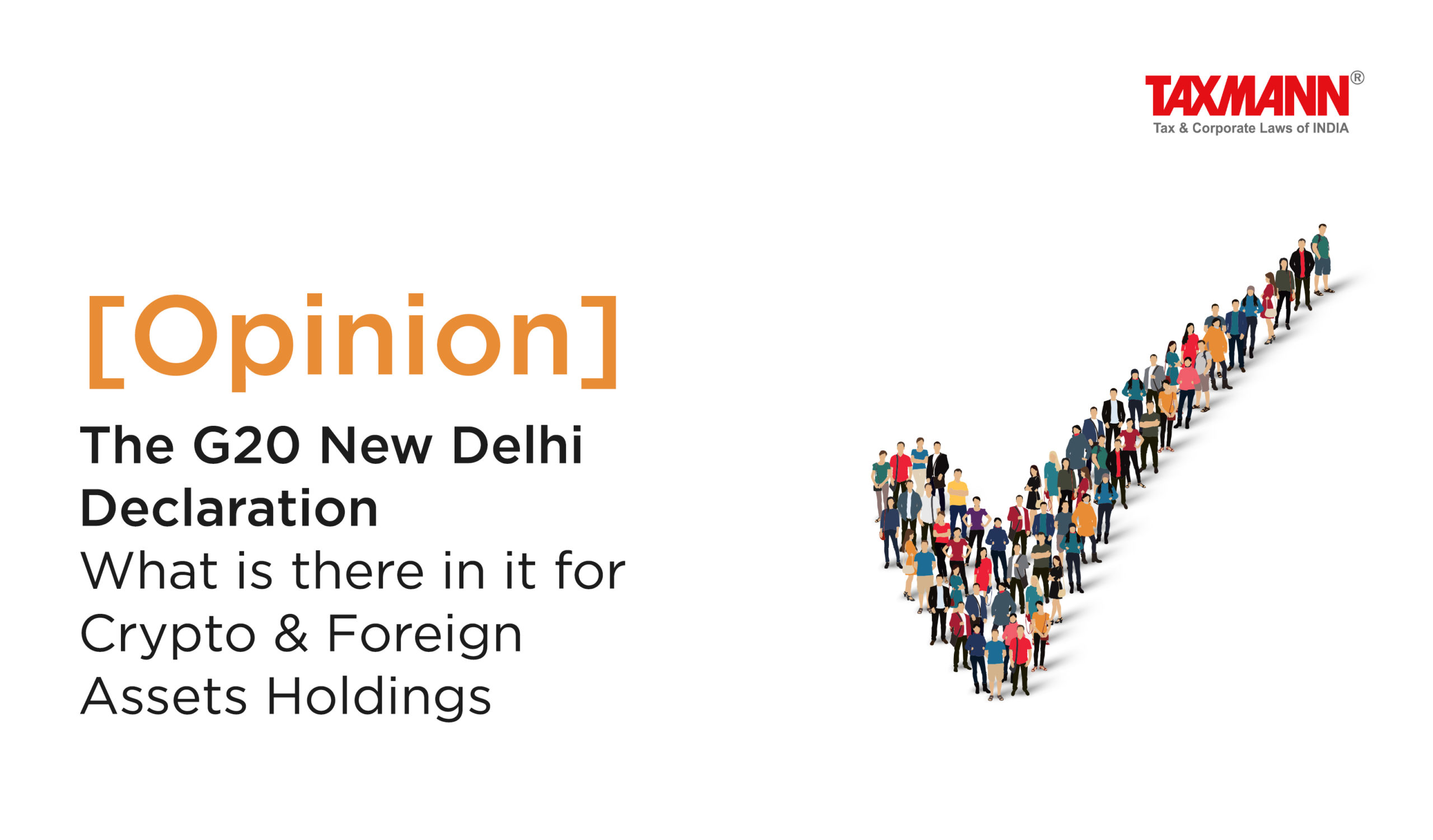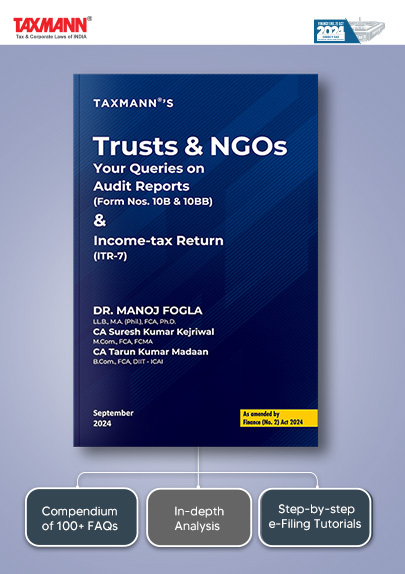[Opinion] The G20 New Delhi Declaration | What is there in it for Crypto & Foreign Assets Holdings
- Blog|News|Income Tax|
- 2 Min Read
- By Taxmann
- |
- Last Updated on 12 September, 2023
Mayank Mohanka – [2023] 154 taxmann.com 174 (Article)
The 18th G20 Summit convened under India’s Presidency for the first time, with the underlying theme of ‘Vasudhaiva Kutumbakam’, has accomplished the major breakthrough on 9.9.2023, with the adoption of the G20 New Delhi Leaders’ Declaration. This Joint Declaration has been adopted after reaching the mutual consensus on several important agenda items like the Digital Public Infrastructure, Gender Equality and Women Empowerment, Countering Terrorism and Money Laundering, Green Development Pact and Financial Sector Reforms for strong, sustainable, balanced and inclusive growth. The inclusion of the African Union in the G20 group and thereby making it the G21, the Global Bio Fuel Alliance and the India Middle East Europe Economic Corridor are also the historic milestones of this G20 Summit hosted under India’s Presidency.
Usually when the leaders of G20 Nations meet and deliberate upon various path-breaking socio-economic and geo-political policy decisions, it naturally is seen as a progressive and comforting thing, but when they also discuss ‘TAX’, it also raises curiosity and anxiety as to what is in the offering. In their joint Declaration, the G20 leaders have reaffirmed their commitment to continue cooperation towards a globally fair, sustainable and modern international tax system appropriate to the needs of the 21st century.
The G20 leaders have agreed for the swift implementation of the Two-Pillar international tax package.
The Pillar One allocates certain portion of the taxing right to market jurisdictions, from the residential jurisdictions. For instance, under Pillar One, India will be able to impose certain portion of income tax on the sales generated in Indian marketplace by the giant e-commerce digital platforms like Amazon, Google, Facebook, ChatGPT etc, which otherwise claim non applicability of any Indian tax liability in the absence of any Permanent Establishment (PE) in India. However, unilateral measures like equalisation levy will require withdrawal after implementation of Pillar One.
Click Here To Read The Full Article
Disclaimer: The content/information published on the website is only for general information of the user and shall not be construed as legal advice. While the Taxmann has exercised reasonable efforts to ensure the veracity of information/content published, Taxmann shall be under no liability in any manner whatsoever for incorrect information, if any.

Taxmann Publications has a dedicated in-house Research & Editorial Team. This team consists of a team of Chartered Accountants, Company Secretaries, and Lawyers. This team works under the guidance and supervision of editor-in-chief Mr Rakesh Bhargava.
The Research and Editorial Team is responsible for developing reliable and accurate content for the readers. The team follows the six-sigma approach to achieve the benchmark of zero error in its publications and research platforms. The team ensures that the following publication guidelines are thoroughly followed while developing the content:
- The statutory material is obtained only from the authorized and reliable sources
- All the latest developments in the judicial and legislative fields are covered
- Prepare the analytical write-ups on current, controversial, and important issues to help the readers to understand the concept and its implications
- Every content published by Taxmann is complete, accurate and lucid
- All evidence-based statements are supported with proper reference to Section, Circular No., Notification No. or citations
- The golden rules of grammar, style and consistency are thoroughly followed
- Font and size that’s easy to read and remain consistent across all imprint and digital publications are applied






 CA | CS | CMA
CA | CS | CMA


